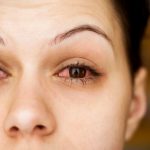 I’m all too familiar with allergies – they can land you on your back, holed up in bed with a headache, stuffed up sinuses and runny nose, red, itchy eyes and overall malaise. It’s not a good time just hanging out with your tissue box all day.
I’m all too familiar with allergies – they can land you on your back, holed up in bed with a headache, stuffed up sinuses and runny nose, red, itchy eyes and overall malaise. It’s not a good time just hanging out with your tissue box all day.
But people are not as smart about allergies as they could be, and make the symptoms that much worse. There’s a difference between complaining and being proactive about allergies, so I’d like to offer you some good advice so allergies won’t sideline you from the activities you enjoy.
When does allergy season strike?
Advertisement
 I have hay fever (which has nothing to do with hay or living on a farm). It’s a seasonal allergy where tree pollens trigger some pretty rough symptoms right about now. Late winter, early spring, when the snow melts and finally makes an exit in my part of the world. I feel irritated just thinking about allergy season.
I have hay fever (which has nothing to do with hay or living on a farm). It’s a seasonal allergy where tree pollens trigger some pretty rough symptoms right about now. Late winter, early spring, when the snow melts and finally makes an exit in my part of the world. I feel irritated just thinking about allergy season.
But when exactly symptoms appear depends on what you’re allergic to and where you live. Ragweed, another common allergen, releases pollen in the summer and fall. But allergy season can start as early as January in southern states and linger into November. Or you might have symptoms year-round. For some, allergies are worse indoors, which means you could be allergic to dust mites or pet dander. You love your dog, but he may not be the best housemate, after all. Allergy experts say those hairless non-allergenic cats and dogs aren’t the answer. The allergy is not to the pet hair, but the pet dander – skin – that flakes off.
If you have an “indoor allergy,” you may be allergic to pet dander or dust mites. Dust bunnies collecting under your bed or couch are one thing, but dust mites are microscopic critters you can’t see. They like to eat dead skin from pets and humans – in fact, you probably shed enough skin per day to feed a million dust mites.
So the key is to find out what is causing your symptoms and be smart about how to handle them. You don’t want to make them any worse than they are. I’ve rounded up the most common allergy mistakes people make – myself included – that really should be common sense. But sometimes, common sense doesn’t come as easily as it should. My husband will second that motion (!).
Common allergy mistakes (and how to fix them)
 First up, give your air purifier some attention. These air filters are excellent at removing pollen, dust, pet dander and other allergens from indoor air. But if you don’t close the doors and windows of the room it’s in, the device is rendered useless. They are meant to filter only room-size areas and not your entire house or the world outside coming in through that open window. Makes sense, but… Get to know your device as well. Some require new filters or cleaning every six months or so, so you want to keep these lifesavers in top condition.
First up, give your air purifier some attention. These air filters are excellent at removing pollen, dust, pet dander and other allergens from indoor air. But if you don’t close the doors and windows of the room it’s in, the device is rendered useless. They are meant to filter only room-size areas and not your entire house or the world outside coming in through that open window. Makes sense, but… Get to know your device as well. Some require new filters or cleaning every six months or so, so you want to keep these lifesavers in top condition.
Next, don’t leave your windows open! I love to let the fresh air in, year-round, but this is a complete misfire for pollen season. Instead, close all windows and keep the air-conditioning on. If it’s not hot, set the AC to filter mode just to keep the air moving. And use the AC in your car as well – it can cut down on the pollen you breathe by 30 percent, experts suggest.
Be proactive. If you have a general idea when your allergies will strike, you should take your allergy medication well in advance. That’s how they are most effective, as preventative instead of managing symptoms when they’re at their worst (and you’re sniffling away feeling sorry for yourself).
Don’t ignore suspicious symptoms. Allergies to pollen or pets can happen at any point for adults, even after years of living without allergies. You can develop symptoms that are subtle, but chronic. If you suspect you may have allergy symptoms that seem to just hang on, get it checked out.
Pay attention to pollen counts. It comes down to information – the more you know, the better prepared you’ll be. You can find pollen count information online or reported on TV weather channels, which you may have just overlooked in the past. Pay attention to these ratings of low, moderate and high, and plan your day.
Time your outdoor activities accordingly. Grasses and trees start releasing their pollen at sunrise (I had no idea), peaking in the late morning and early afternoon. If you want to take a walk, visit with a friend for a picnic, or do your gardening, plan to do it later in the afternoon or early evening. This way, you’ll avoid pollen’s primetime exposure. If you’re a runner and pollen counts are going to be high on a given day, plan to do a less strenuous exercise.
Stuffed animals in your house for your grandkids or just for the heck of it? They seem innocent enough, but they’re serious magnets for dust, if you have that type of allergy. Store them away and purge so you have only a few that you can wash on a regular basis. Keep the dust to a minimum!
Another culprit is your favorite down comforter or down-filled pillows. The feathers break down over time and become even more allergenic as they age. I like the real deal as much as the next person, but when it comes to allergies, opt for the synthetic material in pillows and comforters. Sleeping and living comfortably without allergy symptoms is far more preferable.
2015 worst allergy season yet
 With winter lingering on this year, allergy season is going to be that much more intense. And you thought poor driving conditions were something to complain about!
With winter lingering on this year, allergy season is going to be that much more intense. And you thought poor driving conditions were something to complain about!
Tree pollen levels may skyrocket in the coming weeks because persistent colder temperatures delayed some trees from pollinating last month. Why is this a problem? Trees don’t all pollinate at the same time. For example, maple, cedar and elm trees pollinate early. The delays result in a large number of trees pollinating at once. You might even notice a green mist in the air, right out of a Stephen King movie. The green mist is the clouds of pollen released from the trees.
People in New England may feel it worst. The region had a late winter storm in March, delaying the spring thaw, though any region that’s been slow to warm up this year may be affected.
Who wants to sniffle their way through the warmer months and live with the discomfort of allergies? See your doctor for an allergy skin test to determine what’s causing your symptoms, and be smart about the steps you’re taking to breathe free and easy!
Karen Hawthorne is managing editor at Health eTalk and BelMarraHealth.com. Karen has worked for the National Post, Postmedia News, CBC Radio Vancouver, the Edmonton Journal, the Kitchener-Waterloo Record and the Cobourg Daily Star, reporting on health news and lifestyle trends for over 15 years.
Related Reading:
Best fix for allergies this season…
For some, the arrival of spring is met with dread because all those blooming buds and leaves means one thing: Allergy season is here. A new study has discovered one sure fix for symptoms. Find out more here.
If your breathing problems are getting worse…
Advertisement
If you have breathing problems or asthma, some household cleaning products can really bother you and irritate your breathing passages. And you have to wonder about the safety of chemicals and possible toxins in some of these products, too. Check out these new alternatives.
The Link Between Allergies and Exhaustion
According to the American Academy of Allergy, Asthma and Immunology, “allergies are among the most common chronic conditions worldwide.”….read more
